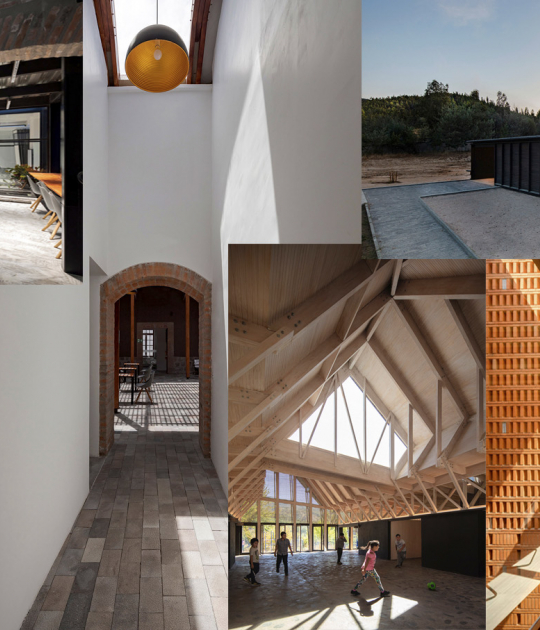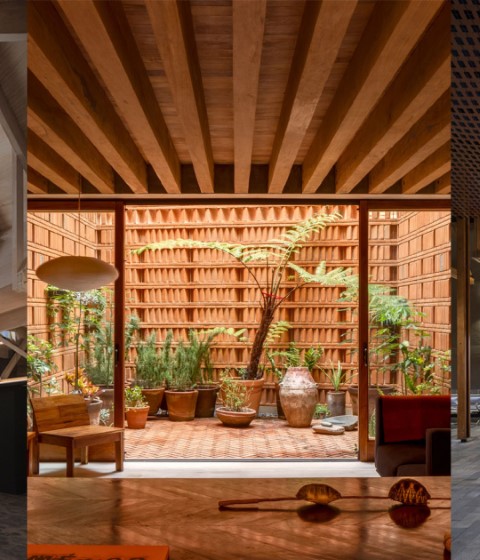Characterized by a large roof that enriches the project spatially, the school is divided into 3 zones, the outdoor area that serves as a reception for the community, the children's games and sports area, and a complementary educational area with native flora, fruit trees and vegetables.
The building establishes an attentive dialogue with the local architecture and is reminiscent of the traditional sheds of the area, with metal cladding, wooden structures, and volcanic stone. On the other hand, the school has passive thermal self-regulation methods, which in summer (this area has high summer temperatures) help protect and mitigate radiation during the hottest hours, with concrete walls and a cross ventilation system. A system that also during winter allows the temperature to be regulated and the spaces illuminated through the windows.

Pivadenco Rural School by Duque Motta and MAPAA. Photograph by Pablo Casals Aguirre.
Description of project by Duque Motta and MAPAA
The Pivadenco School is part of the “Escuelas Rurales de la Araucanía” project, an initiative of the Ministry of Education that, through architectural competitions, proposed the development of 8 small public schools in rural areas of this region. La Araucania is the poorest region in Chile, with a high percentage of Mapuche population, and an unresolved historical conflict that deepens. Our offices developed four schools, two in the Los Sauces district and two in the Melipeuco district, territories with diverse communities that required schools with an intercultural approach. In this rural territory with a scattered population, the school is the center of community life. Then we defined a common strategy for the four schools, we understand these buildings not only as an educational center but also as the social center of a territory. To promote this idea, all the programs for common use and recreation set out in the competition requirements, the dining room, the circulations, the access hall, and the covered patio were brought together in a single space. Thus, a hierarchical space was created, capable of ordering the other enclosures, linking with the outside world, and adapting to host different educational and social activities. In addition, to achieve greater adaptability and fluidity, it was sought to dilute the boundaries between this central space and the classrooms through sliding doors that allow integration and flexibility of use.
In formal terms, the building image recalls old productive warehouses of the region and their materials, but from a contemporary perspective, using metallic cladding, wooden structures, and local volcanic stone. Its location seeks to organize the land by arranging in its surroundings three areas with different uses; a public access square, which accentuates the idea of openness to the community and allows hosting events and meetings; a play and sports area for children. And a complimentary educational zone with native flora, fruit trees, and vegetables.
Finally, seeking energy efficiency and thermal comfort for the school, it is defined that the central space also acts as a thermo regulator of the building in winter and summer, through 3 elements: i) skylights that capture indirect natural light from the north in the summer and direct sunlight in the winter to collect temperature, ii) concrete walls as a thermal mass that absorbs this heat in the hours of sunlight and delivers it during the rest of the day, and iii) a cross-ventilation system that allows to significantly lower the interior temperature in the summer.










































